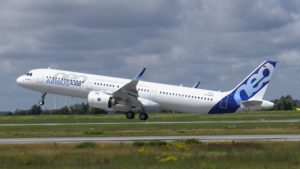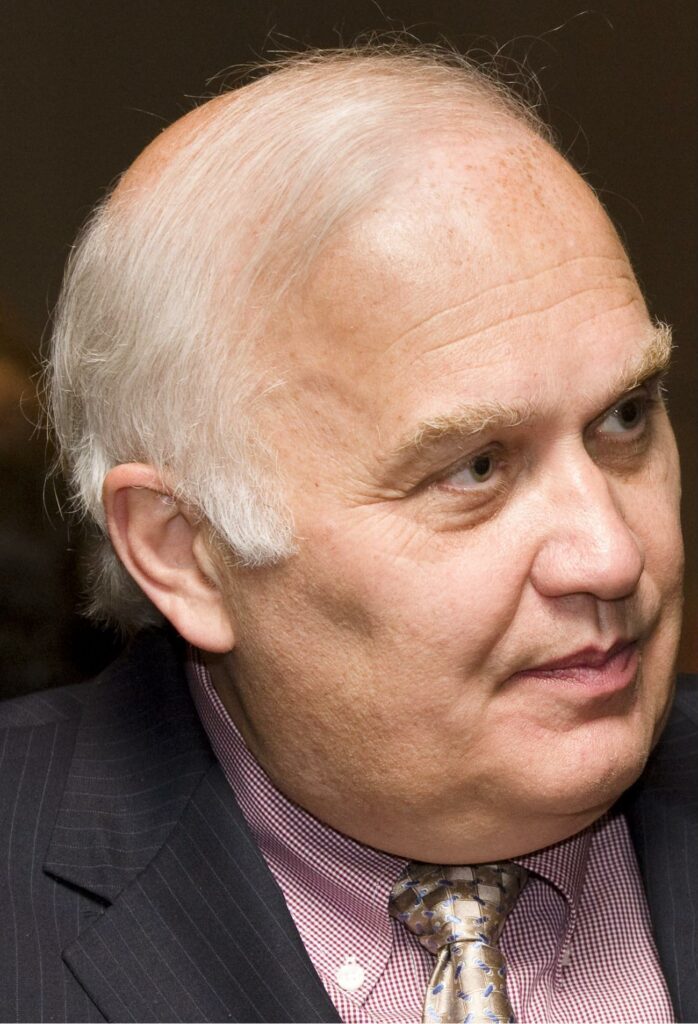Leeham News and Analysis
There's more to real news than a news release.
Pontificatons: Paris Air Show preview
June 13, 2023, © Leeham News: The Paris Air Show officially opens next Monday. LNA will be there, with some events scheduled as early as this Friday.
Our expectations are modest. We don’t expect any new airplane programs from Airbus, Boeing or Embraer, or ATR. These are the only remaining major aircraft companies outside China and Russia.
China’s COMAC finally saw its C919 passenger jet enter service last month after 13 years of development and seven years after entry into service was planned. There won’t be anything new this year from COMAC.
Russia, of course, is immersed in its Ukrainian war. No new civil airplane programs will come from here.
Based on the pre-air show pitches I’ve been receiving, the alternative energy sector is going to be well-represented and active at the show. Most concepts, LNA feels, have little-to-no future.
We expect the news from the Duopoly and Embraer and ATR to be pretty much all about orders. Expectations will be mixed.
Pontifications: Lockheed confident as C-130J faces Airbus A400M and Embraer C-390
The last article in a series of interviews with Lockheed Martin.
June 6, 2023, © Leeham News: The Lockheed Martin C-130 cargo plane entered production in 1954. The first flight was the same year and it entered service in December 1956.
The latest version, the C-130J, is still in production. Named the Hercules, the C-130 is operated by armed services all over the world. Retired versions serve as aerial fire-fighting tankers. A small number of civilian versions, the L-100, serve as commercial freighters.
The C-130J, called the Super Hercules, extends the life of the C-130 series indefinitely. And production for its first civilian operator, a Texas cargo airline, is underway.
Attempts by Airbus with the larger A400M and Embraer with the similarly sized, jet-powered C-390 to compete with or replace the C-130 have largely failed. More than 2,600 C-130s have been produced in 69 years.
The larger A400M has been a technically challenging aircraft and a financial disaster for Airbus. Production began in 2007. The first flight was in December 2009. It entered service in 2013. Only somewhat more than 100 have been built and sales of less than 200 have been made. A host of technical problems marred performance and schedule.
Embraer’s KC-390/C-390, about the same size as the C-130, trades turboprops for jet engines. Production began in 2014. The first flight was in February 2015, and it entered service in 2019. The Brazilian Air Force was to be the largest customer and operator. But financial constraints and changing policies resulted in a reduction in the order. As of today, only about 70 have been ordered and only about a dozen are in service.
Embraer partnered with the US company L3 Harris to market the C-390, including to the US Air Force.
Embraer reports first-quarter losses but says production will increase
Subscription required
By Bryan Corliss
May 5, 2023 © Leeham News – Embraer on Thursday reported a loss in what typically is a slow quarter for the Brazilian jet-maker.
 However, executives talked up plans for production ramp-ups and ongoing sales campaigns as they pointed toward growth in future quarters.
However, executives talked up plans for production ramp-ups and ongoing sales campaigns as they pointed toward growth in future quarters.
“We are on track and we are going to get there,” CEO Francisco Gomes Neto said.
- Deliveries up year-over-year
- Supply chain ‘still challenging’
- 11 active campaigns involving 200 jets
Embraer deliveries surge; executives proclaim rebound from Covid, failed merger
By Bryan Corliss
Subscription required
March 13, 2023, © Leeham News — Embraer executives said last week that the company is on a flight path to growth after weathering two major storms in 2020.
 “As we have said, since 2020, the 2021 and 2022 years would be dedicated to the business recovery after two simultaneous crises – the pandemic and the end of the Boeing deal – and the focus will be on growth from 2023,” Embraer CEO Francisco Gomes Neto said Friday.
“As we have said, since 2020, the 2021 and 2022 years would be dedicated to the business recovery after two simultaneous crises – the pandemic and the end of the Boeing deal – and the focus will be on growth from 2023,” Embraer CEO Francisco Gomes Neto said Friday.
“We can now state we have fulfilled what was promised,” he continued. “The business turnaround was completed in 2022, and we are ready to start a new growth phase.”
Embraer still faces “supply chain challenges this year,” he acknowledged, “but we are optimistic about the company’s future in terms of revenue growth and profitability.”
Neto made the declaration as his company reported delivering 80 regional and executive jets in the fourth quarter of 2022, which was roughly half of the total deliveries for the year.
The company reported earnings before interest and taxes of US $166.2 million for the quarter, which was 196% better than its earnings in the same quarter of 2021.
- Embraer sees orders recovery
- China is one of two promising markets
- Business jet market ‘very robust’
- Continued investment in decarbonization
Read more
The long, slow death of Mitsubishi’s SpaceJet
By Scott Hamilton

The Mitsubishi MRJ90, rebranded the SpaceJet, was to be replaced by the M100. The M100 was Scope Clause compliant and certifiable, unlike the poorly conceived MRJ90. Credit: Leeham News.
Feb. 9, 2023, © Leeham News: Mitsubishi Heavy Industry’s (MHI) announcement this week that it finally killed the SpaceJet program is hardly new. This was apparent as far back as January 2020 when all the Canadian and American leadership at Mitsubishi Aircraft Corp (MITAC) was unceremoniously booted out. Then, in May 2020, using the COVID pandemic as an excuse, all US operations were closed; so was the recently opened Canadian engineering center; the budget was reduced by 95%; and nearly all the engineers at the home office in Nagoya, Japan, were laid off or reassigned.
MHI refused to state the obvious. Instead, officials said repeatedly that the program was “paused.” This drip, drip, drip was all about saving face. Thus, the slide in MHI’s presentation about why the program was finally being killed was more candid than expected.
Orders at risk: Year-End 2022 snapshot
Subscription Required
By Vincent Valery
Introduction
Feb. 6, 2023, © Leeham News: With the publication of the Airbus and Boeing announcing 2022 orders and deliveries last month, and Boeing’s published its 2022 Annual Report (10-K), we undertake our annual analysis of at-risk deals on their books.
Airbus and Boeing have outstanding orders with airlines where there is a material probability some orders won’t translate into deliveries. Most were the result of airlines encountering financial difficulties, but some were related to contractual disputes. Boeing flags such orders as subject to an ASC 606 accounting rule adjustment.
Unlike Boeing, Airbus isn’t subject to an accounting rule like the ASC 606 adjustments at a program level. Therefore, the European OEM does not break down the orders at risk of cancellation by the program. Airbus only discloses the nominal value of its total adjusted order book in its annual report.
LNA analyzed July 2020, November 2020, August 2021, February 2022, and August 2022 Airbus’ and Boeing’s order books to identify orders at risk and come up with an apples-to-apples comparison. We update this analysis with the latest order books from both OEMs. The above links explain our methodology and its differences with Boeing’s ASC 606 adjustments.
Summary
- Lingering order book cleanup for older programs;
- Improving single aisle order book quality;
- Country-level single-aisle market share
- One order materially affects OEM twin-aisle market share.
A deep dive into the single-aisle market
Subscription Required
By Vincent Valery
Introduction
Jan. 23, 2023, © Leeham News: Boeing’s share of outstanding single-aisle orders has fallen significantly behind Airbus. If we include the order book for single-aisle aircraft seating 100 or more passengers of Airbus, Boeing, COMAC, Embraer, and UAC, the American OEM’s market share is now 37% (Airbus has 58%, COMAC 3%, Embraer 2%, and UAC 2%).
Richard Aboulafia sees a risk that Boeing’s market share in the single-aisle market will dip below 30% without the entry into service of a new aircraft before 2035. Boeing Commercial Airplanes CEO Stan Deal said that it is viable for the American OEM’s single-aisle market share to stay around 40%.
In the 2022 Boeing outlook, LNA also noted that there are significantly more A320ceo than 737 NG operators. A broader operator base means more opportunities to place new orders with a more diversified group of airlines. In the context of no new single-aisle family entering service in the next 10 years, convincing operators to “flip” to the competition will be the primary way to increase market share.
Exclusively looking at the nominal order books and A320ceo and 737 NG operators does not provide a comprehensive view of Airbus’ and Boeing’s relative positions in the single-aisle market, though.
In their 2022-2041 commercial market outlooks (CMO), Airbus and Boeing indicated that nearly half of all single-aisle deliveries would replace older-generation aircraft. Looking at the existing in-service fleet of older-generation aircraft provides a better picture of replacement order opportunities by the OEM.
LNA investigates in this article the existing order books of the five major OEMs and operator bases to better assess their relative competitive positions and quantify the current replacement order opportunities.
Summary
- A comprehensive single-aisle fleet snapshot;
- Breaking down the order books between replacements and growth;
- Keep track of order choices for older-generation operators;
- Remaining replacement order opportunities;
- A word about single-aisle freighters.
Pontifications: LNA’s Top 10 stories of 2022
Dec. 26, 2022, © Leeham News: This year has been a year of recovery.
Recovery from the COVID-19 pandemic. Recovery from shortages in the supply chain, layoffs during the pandemic and from financial losses. Boeing continues to struggle in its recovery from the 2019 grounding of the 737 MAX and 2020 suspension of deliveries of the 787.
This year saw a resumption of the big international European air shows since the pandemic—Farnborough. There was great anticipation that Boeing was working on new airplane programs in earnest for the first time in three years.
And disappointments.
Here’s a review of the Top 10 stories LNA published, by readership.
Leeham News in addition to Twitter, Facebook and Linkedin, may now be found on Post.news here and on Mastodon here.
HOTR: United likely can cancel A350 order with little penalty
By the Leeham News Team
Dec. 5, 2022, © Leeham News: United Airlines appears on the cusp of ordering as many as 100 Boeing 787s, multiple news outlets report. Airbus hopes to sell more A350s to United to supplement the 45 already on order.
 But these 45 A350-900s are an order that has been viewed as iffy since United merged with Continental Airlines. Although ostensibly United was the surviving carrier, in reality, Continental was the survivor. The latter’s management displaced United’s old management. The livery retained was Continental’s.
But these 45 A350-900s are an order that has been viewed as iffy since United merged with Continental Airlines. Although ostensibly United was the surviving carrier, in reality, Continental was the survivor. The latter’s management displaced United’s old management. The livery retained was Continental’s.
The A350 order was placed by the old United management. The new executives added to the United order, but Continental had been an exclusive buyer of Boeing aircraft and executives were predisposed toward Boeing. UAL now has 120 Airbus A321XLRs on order. But this came after Boeing couldn’t decide whether to launch the New Midmarket Airplane after years of dithering. With a large fleet of Boeing 757s aging and in need of eventual replacement, United could no longer wait for Boeing to make a decision.
United already has a large fleet of 787s. Adding the A350s will provide an extra range that the 787s don’t have. But how many routes need the extra range to justify another fleet type?
LNA believes that United can cancel the orders for 45 A350s at little cost. The deposits may easily be applied to orders for more A321s, but cancellation penalties are believed to be de minimis. Based on 2018 list prices—the last ones published by Airbus—United could get about 110 more A321s in exchange for the A350s. (The number is probably a little less since the XLRs are more expensive than the A321neo “standard;” the list price makes no distinction between the sub-types.)
LNA expects United to cancel the A350s sooner than later and add to the A321 order.
HOTR: Amazon to add A330 P2F to Prime Air fleet
 Oct. 21, 2022, © Leeham News: Amazon’s Prime Air will add 10 Airbus A330-300 freighters to its fleet from 2023. The aircraft will be converted by EFW, in which Airbus is a partner, and leased from Altavair of Issaquah (WA).
Oct. 21, 2022, © Leeham News: Amazon’s Prime Air will add 10 Airbus A330-300 freighters to its fleet from 2023. The aircraft will be converted by EFW, in which Airbus is a partner, and leased from Altavair of Issaquah (WA).
These are the first A330 freighters that will be operated under the Prime Air brand. Hawaiian Airlines, an A330 operator, will operate the planes. Prime Air largely contracts out flight operations. Atlas Air flies Boeing 767-300ERFs and Sun Country fly Boeing 737Fs for Prime Air.
EFW now has orders for more than 100 A330 conversions, nearly all for the -300 model.





